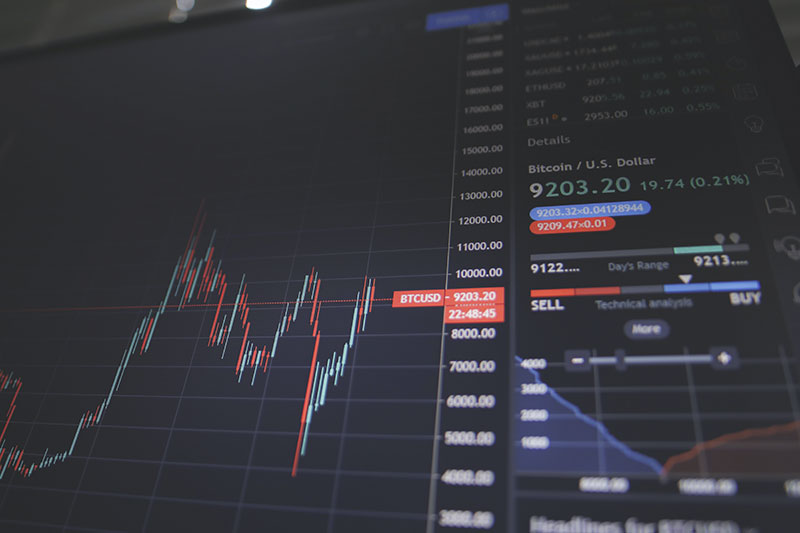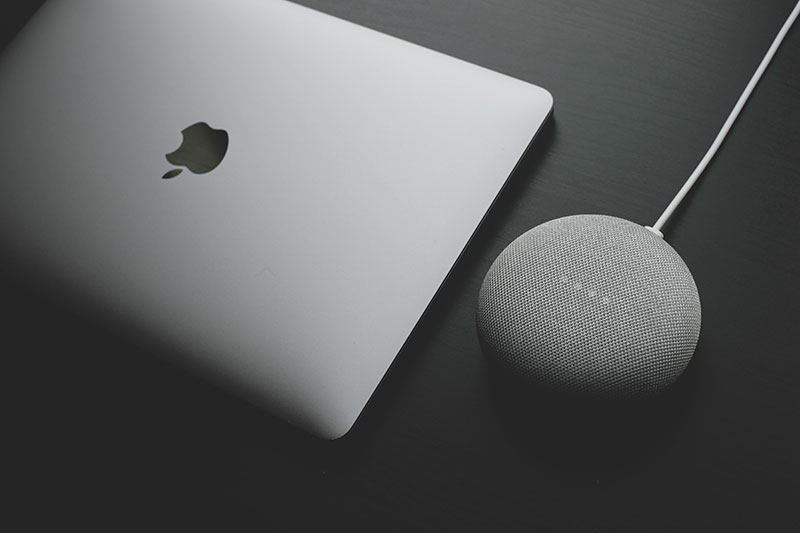2021 has seen an incredibly strong start to the year for the global fintech market. As 2020 marked the year of people shifting towards easy options to meet their financial needs due to the pandemic, 2021 is to witness many fintech trends surge. These trends are:
- Omnichannel payments
- Digital Banking / Virtual Banking
- Blockchain/Cryptocurrency
- Cybersecurity
- Robotic Process Automation for digital tasks
- ML & AI Chatbots
- Biometric security
- Insurtech
- Open financial data
1. Top fintech trends 2021 – Omnichannel payments
The phrase “Omnichannel payments” refers to a new payment processing format in which payments can be made via multiple channels, either it is in-person sales, online or in-app. In regards of business’ benefits, omnichannel can give an overall view of your customer’s interactions, hence providing revenue-driving solutions across the entire payment ecosystem.
In regards to users, omnichannel enables integrated, consistent user experience across touchpoints and channels. Put simply, users now can conduct monetary transactions in whichever way suits them the best.

Fintech trends – Omnipayments
The reason why omnichannel payments stay on top of this list is the urgent need for it. With Gen-Z and tech-savvy consumers dominating the fintech audience, the demands for a seamless and fast payment platform are higher than ever. They want to buy and switch platforms in the quickest way possible, and omnichannel is a solution to go for this.
With omnichannel payments, payment data is unified, creating a premise for more comprehensive data acquisition. The data collected and analyzed through omnichannel payment platforms can form a single and accurate view of how an individual user behaves and spends. Any adjustments and adaptation can later be taken into action for a better and more coherent user experience.
2. Digital Banking / Virtual Banking
Digital banking – or virtual banking – is a common term that you might encounter in your daily lives. Digital banks are the kind of banks that deal in delivering virtual banking services. Most of the operations and transactions are made online, enabling better user experience.
Digital Banking has just been popular for almost 10 years now, but in the shortest possible time, this trend has been the game-changer in every banking institute.
Let’s take the example of Vietnam. Here, the deciding factor for users to choose which bank to use is the banking app and how user-friendly it is for them to make transactions. A simple poll on Facebook has indicated that those with nice UX designs and multi-function features are the most popular banking apps of all.
As digital banking offers a virtual way to connect, people no longer need to wait in a queue or physically visit a bank. Especially with the pandemic taking its toll on the world, the way digital banking offers contactless and paperless transactions secure safety for users.
Another example from Vietnam is that the top-tier banks have already applied opening online bank accounts, which can save a great deal of time and effort from both the banks and users.
Digital banking is fast, paperless and contactless. It takes less time to have a bank account and virtual banking cards. With the pandemic still going on, this is a huge benefit and more and more people will be using digital banking in the future.
3. More mature Blockchain/Cryptocurrency market
The booming of Blockchain and Cryptocurrency market was once deemed as a “Bubble Economy” in the 2017 – 2018 phase. However, entering 2021, the world once again witnessed the surging population and revenue of the Blockchain and Cryptocurrency market.
Especially, Blockchain technology is applied in many fields, with the most notable one is the application of digital banking and virtual banking. The reason why Blockchain technology is soaring in popularity is the transparency and cost reduction it can provide to the market.

Fintech trends – Cryptocurrency & Blockchain
Back in 2017 – 2018, the market of Cryptocurrency did have a skyrocket market value, but it also stumbled upon many obstacles. We all heard the story of how some rumors about banning and restrictions in China and Korea can shake up the market make people dump their coins.
In 2021 and the years coming, there will be drastic changes in how governments handle cryptocurrency. China and India will impose further regulations for settlements. These events will consolidate the legal frame and foundation for cryptocurrency and Blockchain technology to thrive in the future.
As the cryptocurrency market is getting more mature, this prominent “new playground” will continue to attract investments from VC and ICOs. Moreover, the Blockchain technology, with its outstanding performance in transparency and cost reduction capabilities, will continue to prove its profound application in many successful projects.
4. Robotic Process Automation for digital tasks
Robotic Process Automation utilizes digital robots to automate daily routine tasks. It has been adopted and implemented by many businesses in the world.
In a small survey of Deloitte Global RPA Survey, 53% of respondents have already started their RPA journey and further 19% of respondents plan to adopt RPA in the next two years. RPA is increasingly becoming an enterprise-level opportunity: for 64% of respondents on the RPA journey, it is a strategic or enterprise-wide initiative. This figure has grown significantly. Just 12 months ago, only 15% of respondents reported RPA being a part of a wider corporate initiative. (Deloitte Global RPA Survey)
This new technology is promised to cut down some operational costs massively as it can help us in:
- Automation in data validation & data migration between banking applications
- Customer account management
- Report creation
- Form filling
- Loan claim processing service
- Loan data updates
- Back-up of interest teller receipt

Fintech trends – RPA
As businesses want to cut down cost as much as possible, RPA comes in handy because it can enhance customer service, improve accuracy and facilitate productivity. Throughout their work, the RPA can even collect data to, later on, improve data analytics.
Moreover, RPA can also handle the high volume of data at the same time without a glitch, which will be of great advantage to the customer experience. For advanced RPA, they can have the learning capability to take the customer experience to the next level.
5. ML & AI Chatbots in banking sector’s customer care
ML & AI have many applications, but in fintech, the most obvious one is how they can form virtual assistants. These VA can handle customers’ financial queries such as transactions, account balances and get the best investment advice.
The concept of Chatbots has been developed long before, but the use of them are quite primitive and not as satisfactory as people expected. But with the development of technology, these chatbots have become smarter and capable of handling complex commands in a much faster sense.
For enterprises, machine learning and artificial intelligence can also help examine credit data, identify customer behavior and so on. From the data collected, fintech companies or financial enterprises and improve customer engagement by offering the services that fit their customers’ needs most, hence alleviating the services’ quality.
6. Biometric security in fintech trends
When talking about biometric security, people often link it to the old-fashioned approach of fingerprints, finger veins, faces, or irises. However, in the Fintech industry with many security concerns on the rise, the needs for more advanced and technology-instilled security measures are higher than ever.

Fintech trends – Biometric Security
With the numbers of online transactions and users are plummeting, security, or biometric security in this case, needs to be taken to the next level. The risks of data breaches and security failures could result in severe consequences. In 2021, data breach costs rose from $3.86 million to $4.24 million, which is the highest total cost in the 17-year history. The main reason for these breaches came from remote work factor.
With Covid-19 Pandemic shows no sign of slowing down, the contactless biometric solution is the financial technology that is all set to replace touch-based solution. Such solution will be very beneficial in these times as people are trying to avoid using cash and making payments through devices that do not involve touching.
7. Cybersecurity
As technology is developing, the risks in their uses increase, especially in a prominent market as fintech. For banks and financial organizations, customers are at the risk of identity theft, money theft and laundering, application breaches and data leaks, spoofing, malware attacks and many more.
The fear of security threats becomes more severe as they can cause money loss on both users and enterprises. Lawsuits and other legal claims are also more complicated because of this. Hence, businesses are now under great pressure to take action in protecting their customers and gain their trust. Any company or enterprises that fail to do so might have to deal with serious consequences later on.
8. Open financial data
Open financial data is the data shared with third parties in a global movement. These fintech trends can also be referred to as open banking services, which was initially formed in the UK during the Brexit process, and later on, became more widespread in the international market.
The reason why this trend is so popular recently is that it can bring many benefits to both the enterprises and the customers.
- For enterprises, open financial data allows an expanding universe of players—both financial and non-financial—to access customer accounts and data to offer new products and services. From customer analysis and customer insights segmentation, enterprises now can have a more strategic approach in how they can improve their services.
- For customers, open financial data affords greater flexibility in how their money is managed, allowing, for instance, better visibility of accounts and more convenient access to payments.
All in all, open financial data helps increase access to financial services for users. For example, customers of banks can now get loans in a faster time, and banks themselves can also process the loans faster. Getting loans in a faster time. This is very convenient for both parties.
Businesses would definitely want to capture these essences to attract more customers and enhance customer experience.
Conclusion: Fintech is one of the strongest sectors to grow in 2021, and these 9 fintech trends are shaping the way we use technology in the future. To implement the use of technology in financial services and platforms is no easy task, as it requires experty in both fields to really capture the essence of customer experience and how to enhance it.
If you are looking for help from experts in the fintech sector, contact Lotus QA now for more information. Lotus QA has years of experience in assisting financial businesses in digital transformation and implementation.
Contact us:
- Website: https://www.lotus-qa.com/
- Tel: (+84) 24-6660-7474
- Fanpage: https://www.facebook.com/LotusQualityAssurance

